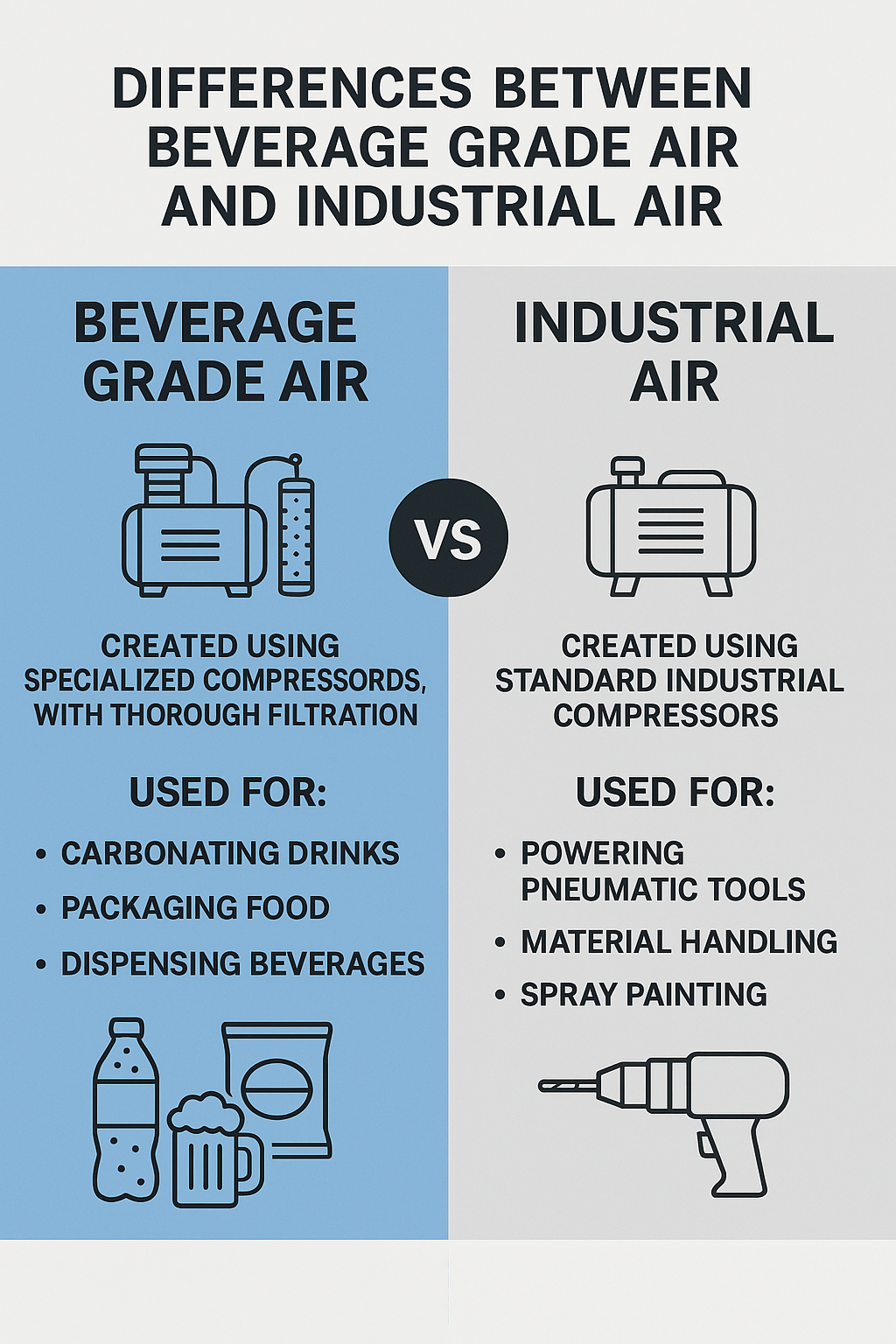Understanding the Differences Between Beverage Grade Air and Industrial Air
Posted by Ryan Feeny on 25th Mar 2025
When it comes to choosing the right type of compressed air for specific applications, understanding the differences between beverage grade air and industrial air is crucial. These two types of compressed air are not only created differently but are also intended for very different uses. Below, we will explore how each type of air is produced and what they are best suited for.
What is Beverage Grade Air?
Beverage grade air, commonly referred to as food grade air, is used in the food and beverage industry to ensure that all processes meet strict hygiene standards. This type of air is primarily used in carbonating drinks, packaging food, and in various dispensing systems where direct contact with consumables occurs.
How is Beverage Grade Air Created?
Beverage grade air is produced using compressors that are specifically designed to avoid contamination. These compressors must meet certain standards such as ISO 8573-1 Class 0, which denotes the highest level of air purity. The air is thoroughly filtered to remove oils, moisture, and other contaminants that could potentially affect the taste and safety of food and beverages. Moreover, the air must pass through several stages of filtration and sterilization to ensure it is free from any microbial contaminants.
What is Industrial Air?
On the other hand, industrial air is used across various industries including manufacturing, construction, and automotive for applications such as powering pneumatic tools, material handling, and spray painting. This type of air does not require the same level of purity as beverage grade air.
How is Industrial Air Created?
Industrial air is produced using standard industrial compressors. While filtration is used to remove particles and moisture that could damage pneumatic machinery, the focus is less on absolute purity and more on functional suitability for non-food-related applications. Industrial air compressors are robust and are designed to handle a wide range of environmental conditions and operational demands.
Applications and Uses
Beverage Grade Air
Beverage grade air is ideal for:
-
Carbonating soft drinks and beer.
-
Dispensing beer and wine in bars and restaurants.
-
Packaging snacks and perishable foods in a clean and safe manner.
Since contamination can lead to spoilage and health issues, it is imperative that the air used in these applications is as pure and clean as possible.
Industrial Air
Industrial air is suited for:
-
Operating air-powered tools such as jackhammers, drills, and wrenches.
-
Sandblasting and material handling in construction.
-
Painting and coating in automotive and manufacturing industries.
Here, the focus is more on the mechanical functionality and less on the purity of the air, as it does not come into direct contact with products consumed by humans.
Conclusion
The choice between beverage grade air and industrial air depends significantly on the intended use. For applications involving food and beverages, the purity of air is non-negotiable, making beverage grade air the necessary choice. Conversely, for general industrial applications where high purity is not required, industrial air is more than sufficient.
Understanding these distinctions helps businesses in food services and industrial sectors make informed decisions about their compressed air systems, ensuring efficiency, safety, and compliance with relevant standards.

